“[Independence] will be celebrated ..with Pomp…Parade…and Illuminations from one End of this Continent to the other…forevermore.” – John Adams, July 3, 1776
Posted by WORTHPOINT USA on 11/07/2021
In a letter to his wife Abigail, John Adams was writing about the unanimous vote on July 2nd that declared independence from Great Britain. But with the adoption of the Declaration of Independence on July 4th, that day became the de facto day of celebration with “illuminations” instead.
The First Celebrations
Celebrating July 4th was an annual event usually complete with fireworks from the beginning. One such celebration in Philadelphia in 1777 was quoted as having “ … a grand exhibition of fireworks (which began and concluded with 13 rockets) on the Commons … ”
It wasn’t until the War of 1812 that Independence Day celebrations took on more of a patriotic event, but more to show support for the country at war—once again with England. On July 4th, 1826, the 50th anniversary of the signing of the Declaration of Independence, both John Adams and Thomas Jefferson had died, but from then on, celebrations took on more of a nostalgic feel. It wasn’t until 1941 that July 4th would become a federal holiday.
However, through all the celebrations, then and since, fireworks have always been the awe-inspiring finale to a day of speeches, picnics, parades, cookouts, games, and, hopefully, no rain or clouds.
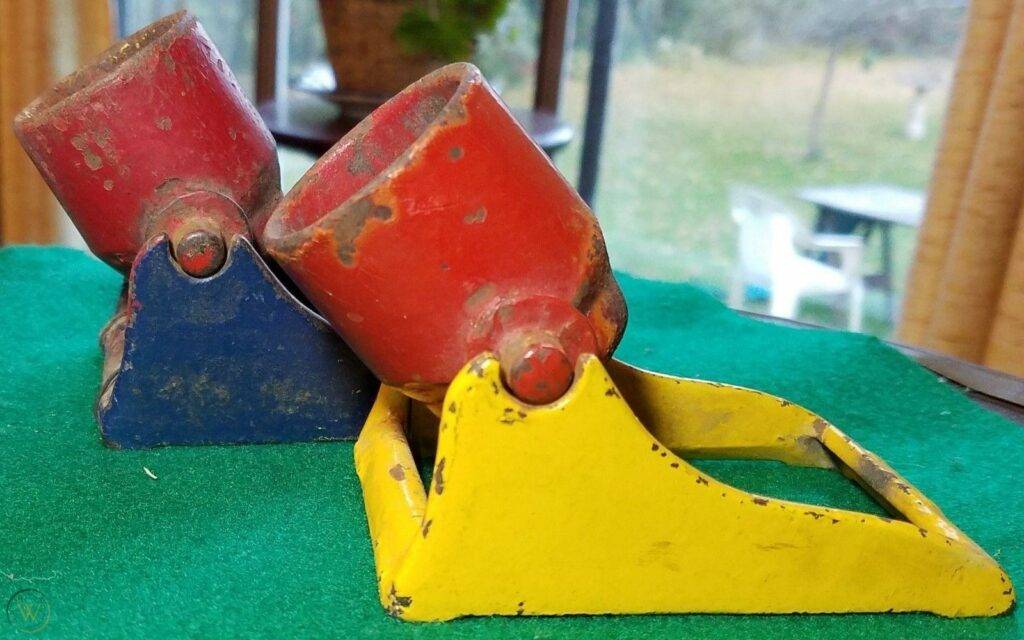 This vintage Kilgore cast iron 1930s fireworks cannon is one of those “toys” that was eventually discontinued as it allows a lit firecracker to be placed in the hole and explode a (hopefully) plastic ball through the air. Who knows where it will land? Well, that’s part of the fun, but it demonstrates the myriad types of firework-related items collectors can find. These two cannons sold for $48 at auction in 2018.
This vintage Kilgore cast iron 1930s fireworks cannon is one of those “toys” that was eventually discontinued as it allows a lit firecracker to be placed in the hole and explode a (hopefully) plastic ball through the air. Who knows where it will land? Well, that’s part of the fun, but it demonstrates the myriad types of firework-related items collectors can find. These two cannons sold for $48 at auction in 2018.
Fireworks—In the Beginning
Without war, there would be no fireworks. Considered one of the “Four Great Inventions,” gunpowder (papermaking, the compass, and printing are the other three) is the combustible fuel that makes up the core of the first munitions formulated as early as the 9th century. By the 13th century, its explosive power had spread throughout Europe, the Middle East, and the known world for use primarily in warfare and conquest by the invading Mongols, known as the “first gunpowder empire.”
In 10th-century China, the “fireworks” were small handheld “crackers” that mimicked bamboo crackling when thrown into a fire. From at least the 13th century, larger outdoor fireworks were more of a celebratory tradition, particularly for royal events and the New Year. By the early 14th century, Europe was manufacturing fireworks, but advancements in chemical compounds to produce brilliant color, light, and high trajectory would continue to be perfected into the 18th century.
Collecting Fireworks
If you are interested in the explosive collectible, fireworks (pyrobilia), there is a wide range of items to begin your collection that includes sparklers, bricks of fireworks (packs of 80 packs of 20 firecrackers), firecracker labels, the firework boxes, any advertising media, signage, postcards, movie posters, stamps, coins, wrappers, tubes, and any items that are usually discarded.
The United States had a short period of producing fireworks from the late 19th century until the early part of the 20th century. Production costs, though, were much less expensive when manufactured in China, and US companies like Hitt Fireworks Co. and Spencer Fireworks of Ohio couldn’t compete. China, with its long history of fireworks, remains the preeminent manufacturer of fireworks today. This short period of US fireworks manufacture, though, provides a key collecting category today.
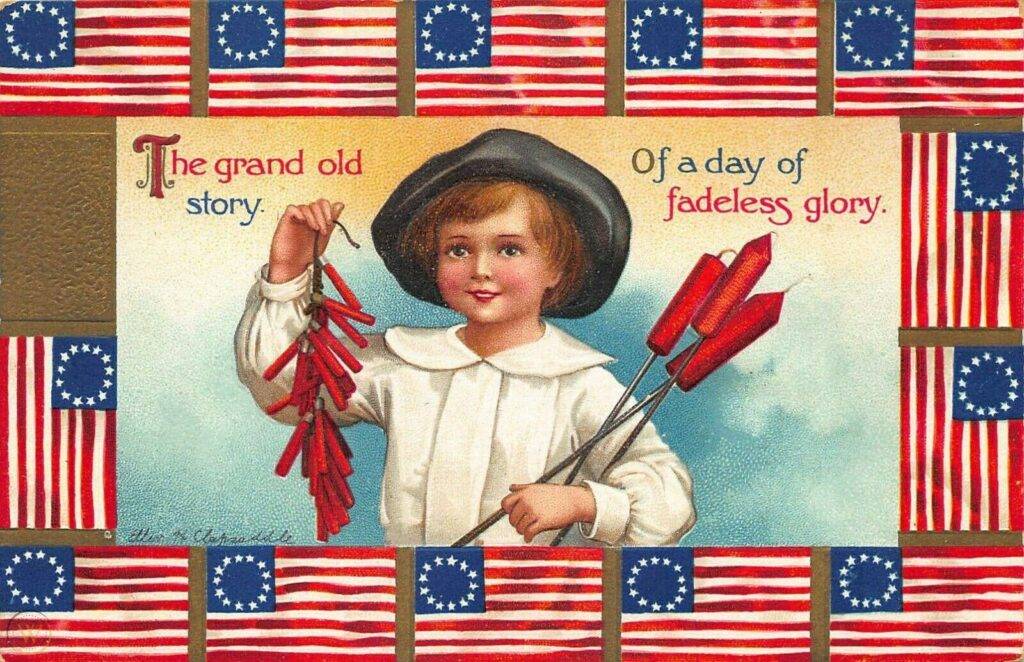 An original colorfully embossed Ellen Clapsaddle 4th of July-themed fireworks postcard dating around 1913, from one of the most prolific postcard artists of the early 20th century, sold for $14.49 in 2019.
An original colorfully embossed Ellen Clapsaddle 4th of July-themed fireworks postcard dating around 1913, from one of the most prolific postcard artists of the early 20th century, sold for $14.49 in 2019.
Firecrackers Go Mainstream
According to Firecrackers: The Art and History, co-authored by Warren Dotz, Jack Mingo, and George Moyer, it was Elias Haskett Derby who brought back a shipload of firecrackers direct from China in 1787 that quickly sold out. Firecrackers have been with us ever since. Firecrackers are just small, handheld fireworks, both having more specific collectible categories.
China exports virtually all firecrackers and fireworks to the world’s market (with Macau, the US, and Europe having short periods of manufacture). Collectors value the exotic names of the fireworks like Dixie Boy (sold mostly in the South and associated mostly with early Christmas celebrations), Red Devil, Anchor, Rocket, Zebra, and Black Cat.
The older the label, box, or firecracker itself, the more valuable, of course. Besides the color, text, place of origin, and graphics, the condition is paramount since fireworks weren’t meant to be saved from one year to the next.
Size matters, too. By 1912, fireworks larger than 5 inches were illegal to own (like the 21 inch Cannon Cracker with its warning not to light it next to a building). By 1967, local governments had banned any firework larger than 1.5 inches.
To differentiate between production periods, there are seven classes that collectors rely on to tell the age of the firecracker usually through the addition of government-mandated warning labels required from 1950 to the present. Learn more about the separate classes of fireworks at crackerpacks.com.
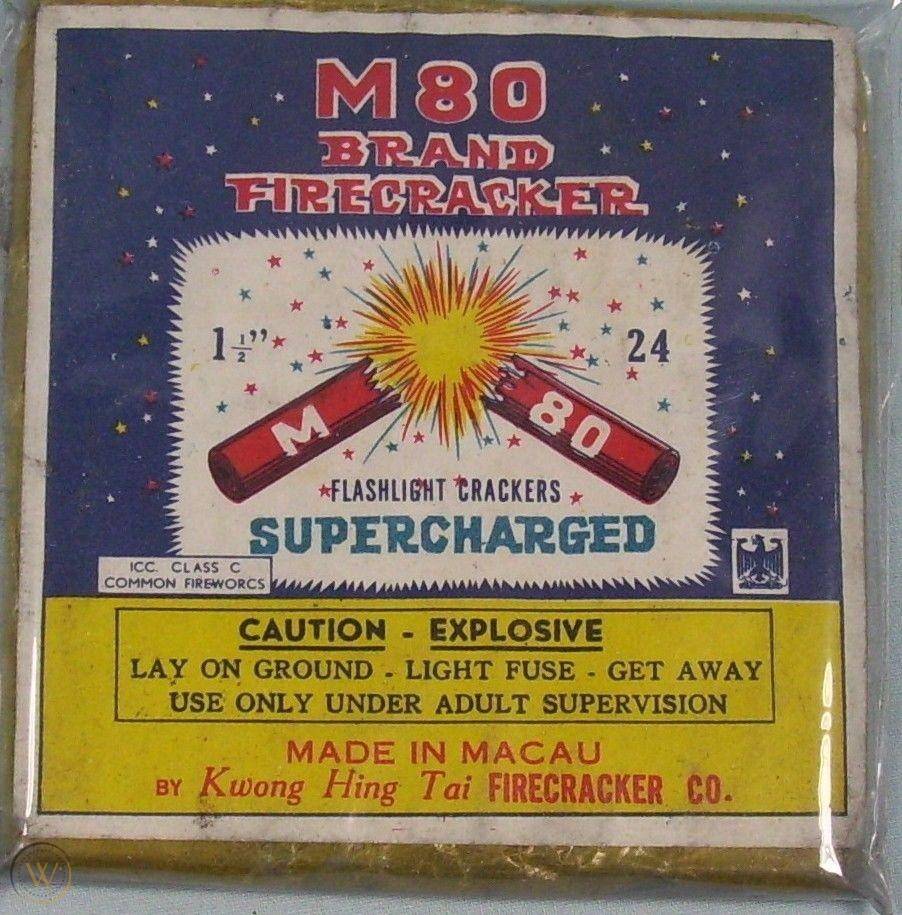 This is an example of a Class 4 restricted firecracker made from 1969 to 1972. It clearly shows the mandatory government warnings: “Caution: Explosive” and “Lay on ground, light fuse, get away.” It sold for $163.50 in 2017.
This is an example of a Class 4 restricted firecracker made from 1969 to 1972. It clearly shows the mandatory government warnings: “Caution: Explosive” and “Lay on ground, light fuse, get away.” It sold for $163.50 in 2017.
Safety of the Collection
Class C fireworks, manufactured before 1950, are heavily regulated by locality, state, and federal law. They were made more dangerous and unstable than ones manufactured since at least 1967. In fact, collecting certain classes of fireworks may be illegal where you live or require a license to even store them from the federal Bureau of Tobacco and Firearms (BATF).
Naturally, collecting fireworks themselves requires that they be stored safely in waterproof containers away from families, in cool conditions, and not stored near heat or with other combustible items. Virtually all shipping companies, including postal services, generally make it illegal to transport fireworks through their networks. Visit the American Pyrotechnics Association, a trade group, for more specifics.
Finally
If you like things that go boom in the night sky, visit others like you at the Vintage Fireworks and Firecrackers public group on Facebook or a Pyro talk forum that highlights fireworks collecting worldwide.
Also, don’t light the fuse until you visit the National Council on Fireworks Safety so that you don’t go boom in the night sky.
Fireworks are a great way to highlight our freedoms and democracy with light and sound, but we should be living and guarding them every day even without the fanfare. Happy Fourth!
Tom Carrier is a General Worthologist specializing in Americana, political memorabilia, and the resident WorthPoint vexillologist (flags, seals, and heraldry) since 2007. Tom is also a frequent contributor of articles to WorthPoint.


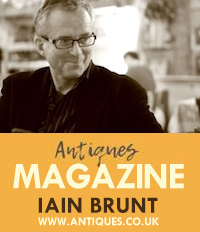


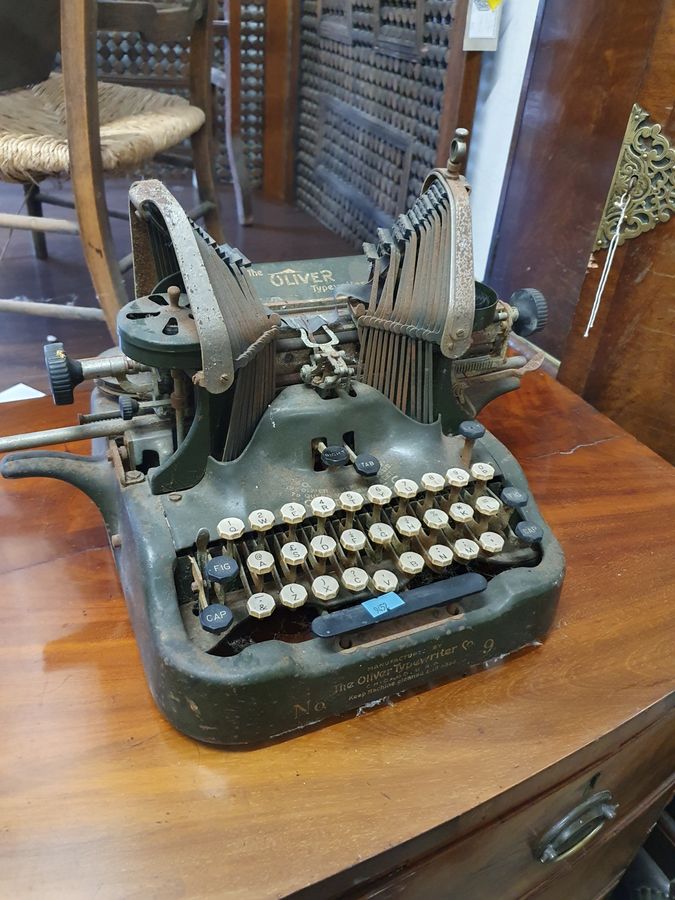
![“[Independence] will be celebrated ..with Pomp…Parade…and Illuminations from one End of this Continent to the other…forevermore.” – John Adams, July 3, 1776](/images/blog/medium/vintage-lion-globe-brand-collectible_1_f49d353b6dd51cdade6c6d9a2f9dea13-451x1024.jpeg)